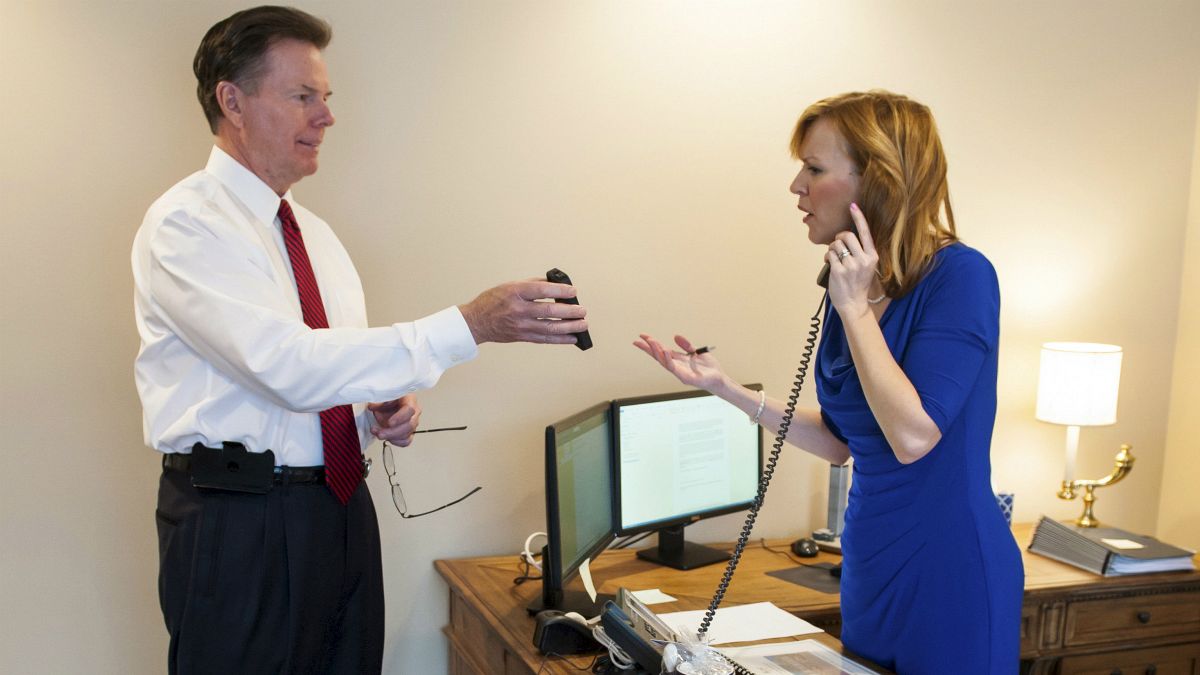When the clock struck 2.
When the clock struck 2.38 pm on Monday, thousands of women in Iceland stood from their desks, filed out of their workplaces, and took to the streets in protest.
The country’s streets were soon awash with demonstrators, angered over a pay gap between male and female workers which reports forecast will not close for another 170 years.
Women in Iceland leave work at 2:38pm on Monday to protests the gender pay gap. Women work w/out pay after that hour pic.twitter.com/719wf0svBf
— 15MBcn_int (@15MBcn_int) October 25, 2016
In Iceland – a country which tops the 2016 World Economic Forum’s (WEF) rankings in terms of gender equity, and has done so consistently since 2009 – women earn on average between 14 and 18 percent less than their male counterparts.
Effectively, after 2.38 pm on an average eight hour long working day, Iceland’s women are working for free while its men are still being paid.
A campaign with a past
Such a protest is not unprecedented in Iceland. On October 24, 1975, Icelandic women took what they referred to as a “day off” – refusing to work, cook, clean, or even look after their children in order to draw attention to their plight.
Just over a decade ago, in 2005, women left work at 2.08pm – the moment they began working without pay. In 2008, they walked out at the slightly later time of 2.25pm – indicating that the gender pay gap is narrowing, but unfortunately, according to reports, at nowhere near the rate that would make equality a reality in any of our life times.
Icelandic English-language news service Grapevine suggests that, at the current rate, only three minutes worth of pay have been added each year.
How do others fare?
While any pay gap at all is disheartening, Iceland can take solace in the fact that it is one of the more progressive countries in the work when it comes to gender equity.
The world's 10 most gender-equal countries https://t.co/nRCkb0L2tq#gendergap16pic.twitter.com/wiUeqFTLzd
— World Economic Forum (@wef) 27 October 2016
By comparison with the EU-wide average of 16.65%, Iceland’s gender pay gap is an indication of its progress beyond many of its European counterparts.
While it maintains its top spot in the WEF rankings, many countries slipped in the rankings. The Netherlands (16), the United Kingdom (20), and many more countries considered by many to be “progressive” dropped down the table.
Last year, the WEF predicted that the gender pay gap would close by 2133. The latest report is a severe setback to former estimations and a clear sign that the world has a very long way to go with the gap now standing at 59 percent – a level not seen since the financial crisis in 2008.
The wider picture
Equality is not an easy thing to represent with numbers.
The WEF uses a 0 to 1 scale to rank countries in its report – 0 indicating a complete lack of equality, and 1 indicating complete equality.
However, many different factors are in play that hinder comprehensive figures when it comes to the gender parity.
For example, a country’s economic status invariably has an effect on the outcome of research in the area.
Richer countries, generally speaking, are able to offer a better quality of education and healthcare to a wider range of demographics – thus providing more working opportunities.
By comparison, such resources in poorer countries are far less accessible, potentially throwing off definitive numbers.
The WEF does take such factors into account, however there are certain unavoidable obstacles when it comes to generalizing the pay gap.
Debunking bad numbers
Reports such as these in the past have tended to gloss over certain patterns in womens’ working tendencies.
It is important to remember that in a large number of progressive countries, it isn’t often that women receive a lower pay than men for performing the same role – and few would complain about different salaries for different jobs.
Is it rational for a desk worker, regardless of gender, to believe they should earn as much as a CEO?
In the United Kingdom – currently at number 20 in the WEF rankings – for example, the Office for National Statistics (ONS) outlines a variety of different factors that may have an effect on the gender pay gap.
A far higher proportion (41 percent) of women in the UK choose to work part-time than men (12 percent), earning less on average per hour than their full-time counter parts.
The ONS reports that, interestingly enough, the gender pay gap for part-time in employees alone is 6 percent in favour of women e.g. in the part-time sector, female workers earn 6 percent more than males – highlighting the ease at which certain numbers can distort a wider picture.
Another issue arises when looking at the sectors in which women are more frequently employed.
While males are far more likely than females to work in skilled trades, the frequency of women in lower-paid secretarial or administrative jobs is far higher than men.
For better or worse, children also have a profound effect on female work habits, with women the more likely to take time away from their jobs to have and care for children, while their partners continue to work.
Differences in pay by age group seem to widen after the age of 30 – presumably when many workers are beginning to settle down and start a family.
Inequality is self-evident
Regardless of skewed statistics, however, one need only switch on the news to see a disparity between men and women.
The numbers of female world leaders and CEOs of global companies are dwarfed by the number of men in the same role.
We must remember that, when it comes to equality, the gender pay gap is just one piece of a very large puzzle.
As it stands, not a single living woman will see the day when they stand equal to men.
